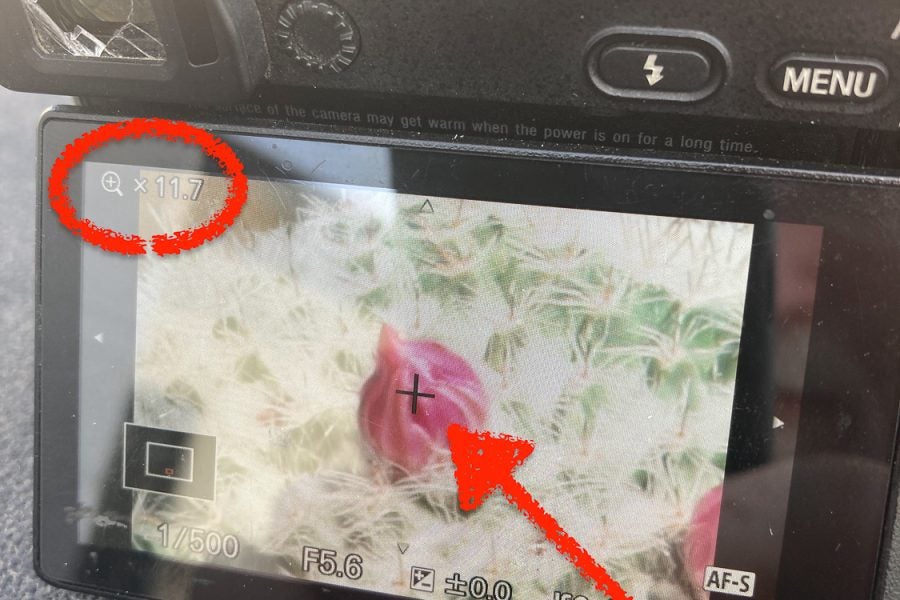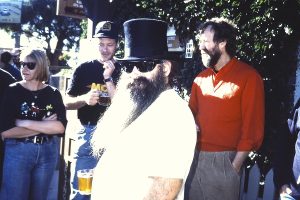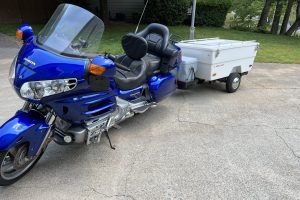In years to come, after you’ve finished traveling regularly, your photos might become your greatest reminder of memories gone by—but are those images as sharp as they could be?
Experienced photographers and phone-only users can move on; the experienced shooter knows how to get quality images, and the phone user will get only as much as the phone will give them.
Now, who’s left? Riders who may be new to photography, or ones who are upset with their image clarity, and maybe a few who are venturing away from the AUTO button. However, the advice here might work with that too, depending on your camera.
Modern cameras are amazing pieces of technology, and have loads of features hidden in their menus that some users never realize are there. In this instance, I am talking about ‘focus magnifier’ on Sony and Canon, and probably other names with other brands. A Google search will tell you what your camera company calls it.

Photo: rtwpaul
…but what is it?
A built-in camera feature that allows you to zoom in (usually up to about 10 times or more than your lens at maximum zoom allows) to show perfect focus. On my Sony a6300, it’s 11.7x; using the rear pad, you can move a cursor for pinpoint accuracy. You also get the option to refocus if needed by half-tapping the shutter release again before the shot is taken, but make sure you then press the shutter release in the same motion.
***But remember to change the camera to manual focus, to remember that focus pointif你不把枪吧!
In short ‘Focus Magnifer’ is a way to double check that ‘AutoFocus’ actually focused on what you wanted it to.
When will I, or should I, use this?
In general, when you have a subject that is NOT moving
For portraits, this works well, especially if you are shooting from a distance with a zoom lens. It’s even better if your camera doesn’t have a specific eye focus. Landscapes, still life, or astrophotography are other areas where this helps to sharpen an image that you might want to blow up at a later date, maybe to hang it on your wall.
For a basic example, I just went outside took this shot. The small cactus in the foreground was what I wanted in focus (this could be a person/bike/any amazing thing you might never see again), and presumed it was focused on it as the camera beeped and showed a green focus square around my subject.
I might ride the rest of the day or a few days not look at this on a bigger screen until it’s too late and find out it’s mostly in focus but not on what I wanted specifically in focus… sound familiar?

What I saw on the viewfinder. Photo: rtwpaul
From the camera…
The image, on first inspection, looks good and you’d probably move along and be happy because you think you got the shot?

Photo: rtwpaul
……但经过仔细观察,使用Magnifi焦点er at x11.7, my subject wasn’t the focal point the camera chose as its primary focus, even though my camera was set on single point focus!
The reason, in this case, I’m guessing, was probably the cactus was too small an area so the camera ‘chose’ something else easier for it to focus on.

Photo: rtwpaul
…but if I use the focus magnifier I can correct that quickly and easily, so much so, I can now focus on a tiny cactus flower that’s only a few millimeters across and around 10 feet/3m away.

Photo: rtwpaul
…and then get the shot focused as I had originally intended.
The image below from the camera has been cropped and zoomed in to show the difference two seconds can make in either having a tack sharp image or one that hits the cutting room floor.
For ease of use I have Focus Magnifier on a custom button so I can find it quickly and not have to go into the menu each time to use it.

Photo: rtwpaul
Astrophotography is another very good time to use this method. You can highlight exactly what you want in focus by lighting that area up with a flashlight— in this case, in my tent. I can double-check before I take the shot, then turn the camera to manual focus so it doesn’t change. My only concern then is getting my exposure timing correct.
A point to remember though; if a tent (in my case) or maybe a tree is your focal point with the Milky Way in the background: that tent/ tree is most likely NOT going to be 100% sharp.
The reason is, you are using a 15-second +/- open shutter so a slight breeze will create movement. A static item like a motorcycle can be tack sharp.

Photo: rtwpaul
Is there anything else I can do to achieve sharper images quickly?
In general, setting your aperture to f8 or above can help as it gives you a better depth of field (more things in focus), and if you ever meet an old journalist, they will tell you the easy way to always getthat shotis…”f8 and be there”







